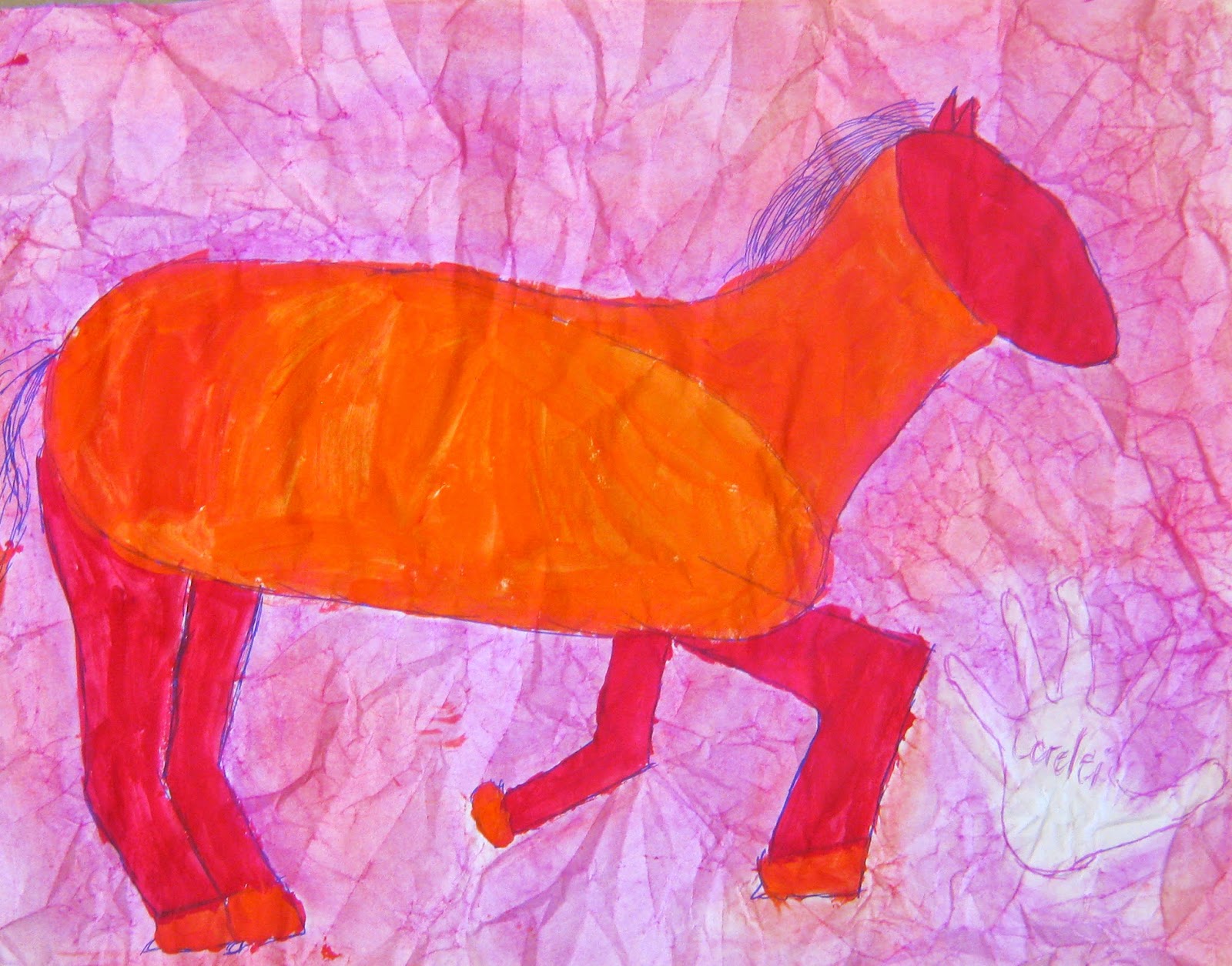First graders took a trip back in time, over 40,000 years ago, to the age of cave people. Cavemen drew amazingly realistic pictures of animals on the walls of caves. What kinds of art tools do you think they used? Was there a Michael's Arts and Crafts back then to buy paints and brushes?
We looked at cave paintings of early horses, buffalo and other animals. They were not only recognizable, they looked like they were drawn in action, appearing as if they were running on the walls in the caves! Surprisingly, these images of early cave art are very similar all over the world, which suggests that people were producing "art" at a much earlier time, possibly before they began to spread out across the earth.
In art class, we drew our animals in pencil and marker on big sheets of recycled paper. Then we crinkled up the drawings to create creases, just like on the surface of a rock. The animals were painted in warm earth tones, and chalk was rubbed into the background areas to represent the marks and colors of the wall.
Often, the cavemen used a hand print to signify people in their art. Taking a cue from the images we shared in class, we traced our hands near our animals to represent our signatures.
Here are a few examples of the work in our prehistoric cave. All of our paintings will be on display in Panther Hall next week for our Spring art show. You can also see everyone's images on artsonia.com. http://www.artsonia.com/schools/school.asp?id=114839
 |
| Cave Painting by Adam |
 |
| Cave Painting by Saahil |
 |
| Cave Painting by Lorelei |
 |
| Cave Painting by Zahra |








